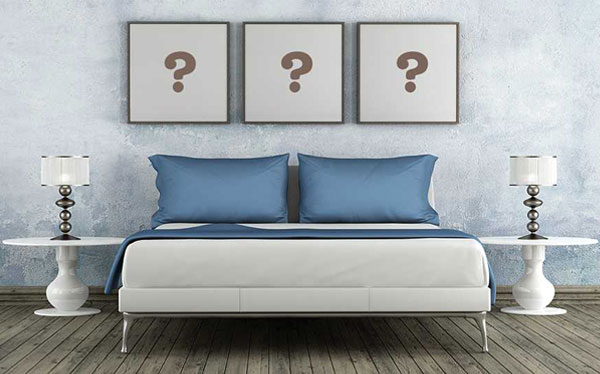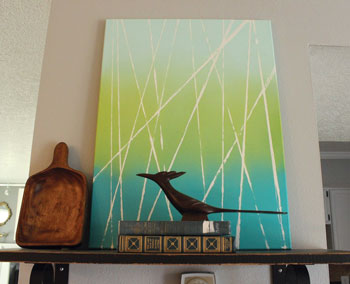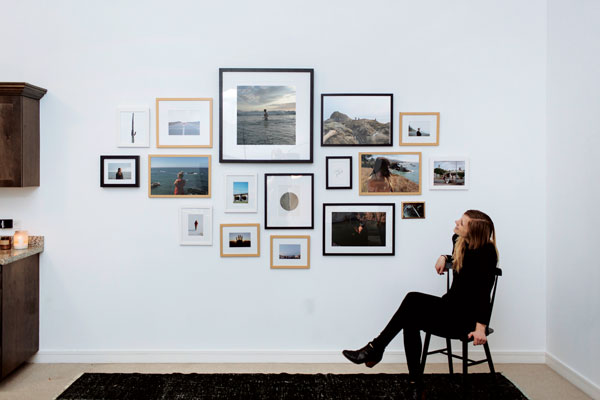Original Art at Home
Tips for buying and displaying your first (or fortieth) piece of art
Shop around.
Incorporate surprises.
Art is in the eye of the beholder, so don’t be afraid to experiment with nontraditional art forms and play with texture. “The best art collections are eclectic,” says Mary Jo Weidert, owner of Wild Apple Glass Studio & Gallery in Menasha. “You may be partial to one style, but get some sculpture, some framed pieces and some 3D art. Neon art can really give your collection a ‘wow’ factor. The days of buying art to match your sofa are gone. You need to open yourself up more than that.”
Pro Tip: Art doesn’t have to break your budget. “The best art buys are going to be from young, emerging artists,” Weidert says. Consider purchasing works from artists just starting out if you are on a strict budget. Arzberger says most artists also produce art prints of their work at a fraction of the cost of the original. “With modern techniques, you can make any print look like an original with just a few framing tricks,” he says.
“People undersize their art a lot,” says Katie Jane Ferrito, interior designer with Midwest Design Homes in Kaukauna. “It’s hard to get a grasp of scale when you’re standing in the store. You end up picking out a painting, get it home and see it’s three inches too short for your space.” Ferrito suggests using painter’s tape to block out shapes on your wall, measuring the shapes for size and matching them as closely as possible to the pieces you purchase. Ferrito also says to hang art at eye level. The standard eye-level is for a person with a height between 5’6” and 5’8”, but at home it needs to work for you.
Build around key pieces (or just what you love).
If it’s in your budget, investing in one statement piece may end up being economical in the long run, but consider your goal, Arzberger says. “If designing an entire home with similar artwork, start with a main show piece or focal point, and choose other artworks that complement it,” he says. “If you are not concerned about designing the walls all at once, choose a piece that you enjoy. The rest will fall into place eventually.”
Tell a story.
Whether it’s the story of the artist or your own narrative, art reveals something about its owner. “Most of the work I buy is personal, either from an artist I’ve met or trips I’ve gone on. It becomes a piece of me rather than something I hang on the wall,” Pigeon-Metzner says. She says choosing art that inspires or moves you emotionally ensures you will never tire of it. “Art is an extension of who I am,” she says. “It’s an extension of my beliefs, memories and connections to other people.”
The gallery wall, a grouping of artwork in various shapes and sizes, is one of the hottest trends in displaying home art collections. “I’m seeing gallery walls with art on canvas mixed with metal and rustic wood boards. It’s all about texture,” Ferrito says. “Woven tapestries with Southwestern influences are in the mix as well.”
To create a gallery wall that looks cohesive rather than chaotic, Weidert recommends laying out a plan first. “You should start by buying a roll of brown paper and cut out art sizes and tape them to the wall to create the gallery vision,” she says.
Start in the center of the wall and build outward for a salon-style look. Keep things cohesive by choosing a unifying theme or color palette. “I like to offset a gallery wall with a sculpture in the corner,” Weidert adds.
Not sure where to start? Arzberger says prospective art buyers should first answer these questions:
- What are you passionate about? Hobbies and personal interests can be a great starting point when looking for artwork in themes and styles that speak to you.
- What makes you happy? “I encourage people to sit down and write out what is it they respond to – figurative, landscape, abstract pieces, or a medium like oil, watercolor or ceramics,” Hertz-Sumnicht adds.
- Is the artwork just for you or a broader audience? Envision where in your home the art will be displayed and who will view it most.
- What do you value more: cohesion or variety? Are you more concerned with creating a unified look throughout your home, or would you rather display multiple styles of artwork?















Leave a Comment